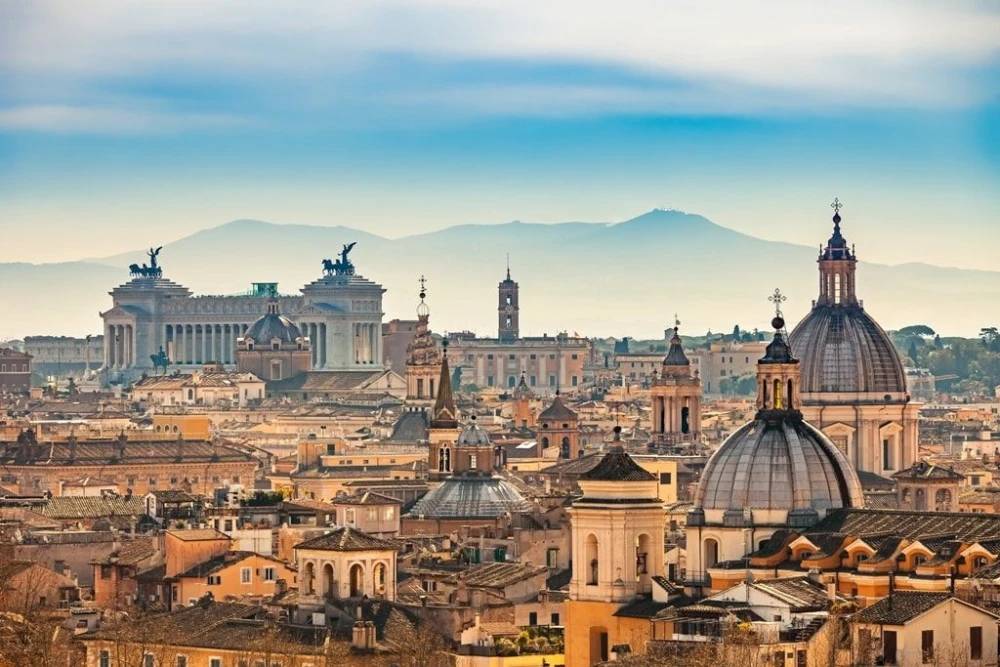15124, Maroysi, Athens, Greece
Valencia, Livorno (Florence, Piza), Civitavecchia (Rome), Genoa, Marseille (Provence), Tarragona, Barcelona

Since its founding as a Roman colony in 138 B.C., the Visigoths, the Moors, the Catalan and Aragonese and the modern tomato-throwers have thrived on the shores of the Mediterranean at the Gulf of Valencia. Valencia is a mix of the old and the new. The historic past is depicted in the stone geometry of the Valencia Cathedral, the mediaeval gates of the Serrano and Quart towers, or the Tribunal de las Aguas (Water Court) and one of the most iconic examples of Gothic architecture in Europe, the Lonja de la Seda, declared an Intangible Cultural Heritage site by UNESCO. The new facet is embodied in the arching white steel of the futuristic City of Arts and Sciences, designed by Valencian architect Santiago Calatrava.

Livorno, Tuscany's second-largest city, is the maritime gateway to the Tuscany region and its two most known cities, Florence (to the west) and Pisa (to the north). Among Livorno's main attractions are the Cisternone, an impressive neoclassical building on Viale Giosue Carducci, designed like a Roman bath, the main city square Piazza della Repubblica with Fortezza Nuova (the castle dating back to around 1576) in the background and a number of interesting shops in the city centre that visitors can explore. Florence, the cradle of the Renaissance, is home to the Duomo, the Uffizi and the Ponte Vecchio. Pisa contains a host of beautiful cathedrals, palaces and bridges over the Arno River, as well as its glorious Leaning Tower, monument to faulty engineering.

Our gateway to the Eternal City, Civitavecchia has served as Rome's seaport since the 13th century, boasting a long and venerable history. Its location near the modern city, made it a perfect vacation resort for emperor Trajan, who built a pleasure villa. while Bernini and Michelangelo designed the harbor fortifications. Yet the Eternal City, the ancient capital of the Western World and the center of Christianity for nearly 2.000 years, is our main reason to be here. YYou can visit the ruins of the Forum and the Colosseum, throw a coin in Fontana di Trevi to make sure you return to Rome one day, take a photo in front of the Vatican, view the splendors of the Sistine Chapel or climb the Spanish Steps, once the heart of Rome's Bohemian Quarter and enjoy a delicious gelato, in the glamorous area.

Today we are visiting Genoa, the capital of the Province of Genoa and of the region of Liguria, a powerful commercial center seaport and city-state. It was the birthplace of the great adventurer Christopher Columbus and its maritime roots have fostered a dialect that has absorbed elements of Neapolitan, Calabrese and Portuguese over the centuries. Genoa's harbor is a bustling swarm of activity, hosting a museum and an aquarium and has a magnificent medieval flair, ideal for a nice stroll. This port is our launching point for the sprawling metropolis of Milan.

Marseille is the largest port on the Mediterranean, France's second largest city and a virtual melting pot of peoples and cultures. It is a unique city with a feel and culture all its own. It is also a place of striking contrasts, from the fishing boats of the picturesque Vieux Port to the modern Canebiere. Dominating the harbor is the infamous Chateau d'If, the rocky prison from which Alexandre Dumas' "Count of Monte Cristo" escaped. If you have time, explore the countryside around Arles and Avignon, immortalized in the canvases of Van Gogh, Cezanne, Matisse and Picasso, try the renowned bouillabaisse or tour the lovely towns and vineyards of Provence.

Tarragona has the international recognition of UNESCO World Heritage for its archaeological legacy of ancient Roman Tarraco (Exceptional Universal Value), the medieval monastery of Poblet and the Castells, human tower constructions, one of the most genuine cultural manifestations in Europe. Another of the great attractions in the area is the new Ferrari Land Park at PortAventura World, reference theme park in Europe. 70.000 m2 of excitement, adrenaline and fun, in which you can enjoy an exciting experience, and discover all the secrets of the mythical Italian brand and its creator, Enzo Ferrari. Located just 100 km from Barcelona, it offers endless possibilities to visit.
Since its founding as a Roman colony in 138 B.C., the Visigoths, the Moors, the Catalan and Aragonese and the modern tomato-throwers have thrived on the shores of the Mediterranean at the Gulf of Valencia. Valencia is a mix of the old and the new. The historic past is depicted in the stone geometry of the Valencia Cathedral, the mediaeval gates of the Serrano and Quart towers, or the Tribunal de las Aguas (Water Court) and one of the most iconic examples of Gothic architecture in Europe, the Lonja de la Seda, declared an Intangible Cultural Heritage site by UNESCO. The new facet is embodied in the arching white steel of the futuristic City of Arts and Sciences, designed by Valencian architect Santiago Calatrava.

Barcelona is one of the world's greatest treasures, a global capital of commerce, fashion, culture and sunshine. Cruise visitors should start with a walk down Las Ramblas, the glorious tree-shaded thoroughfare at the heart of the city, enjoy a dive in the wonderful beaches nearby, but, most of all, see what visionary architect Antoni Gaudi wrought. Seven of his creations have been honored as UNESCO World Heritage Sites, including La Sagrada Familia, the Park Guell and Casa Mila. Time provided, you can also visit the former Olympic Ring on the hill of Montjuic, home to world-class parks, fountains and museums. Barcelona, which nurtured such artistic giants as Picasso, Dali, Miro and Casals, is definitely a traveler's paradise.
Itinerary







